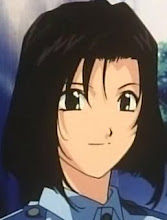Japanese dragons are diverse legendary creatures in Japanese mythology and folklore. Japanese dragon myths amalgamate native legends with imported stories about dragons from China, Korea and India. Like these other Asian dragons, most Japanese ones are water deities associated with rainfall and bodies of water, and are typically depicted as large, wingless, serpentine creatures with clawed feet. The modern Japanese language has numerous "dragon" words, including indigenous tatsu from Old Japanese ta-tu, Sino-Japanese ryū or ryō 竜 from Chinese lóng 龍, nāga ナーガ from Sanskrit nāga, and doragon ドラゴン from English dragon
Kojiki and the ca. 720 CE Nihongi mytho-histories have the first Japanese textual references to dragons. "In the oldest annals the dragons are mentioned in various ways," explains de Visser (1913:135), "but mostly as water-gods, serpent- or dragon-shaped." The Kojiki and Nihongi mention several ancient dragons:
Yamata-no-Orochi 八岐大蛇 "8-branched giant snake" was an 8-headed and 8-tailed dragon slain by the god of wind and sea Susanoo. He discovered the Kusanagi-no-Tsurugi (legendary sword of the Imperial Regalia of Japan) in one of its tails.
Watatsumi 海神 "sea god" or Ryūjin 龍神 "dragon god" was the ruler of seas and oceans, and described as a dragon capable of changing into human form. He lived in the undersea Ryūgū-jō 龍宮城 "dragon palace castle", where he kept the magical tide jewels.
Toyotama-hime 豊玉姫 "Luminous Pearl Princess" was Ryūjin's daughter. She purportedly was an ancestress of Emperor Jimmu, Japan's legendary first emperor.
Wani 鰐 was a sea monster that is translated as both "shark" and "crocodile". Kuma-wani 熊鰐 "bear (i.e., giant or strong) shark/crocodile" are mentioned in two ancient legends. One says the sea god Kotoshiro-nushi-no-kami transformed into an "8-fathom kuma-wani" and fathered Toyotama-hime, the other says a kuma-wani piloted the ships of Emperor Chūai and his Empress Jingū.
Mizuchi 蛟 or 虯 was a river dragon and water deity. The Nihongi records legendary Emperor Nintoku offering human sacrifices to mizuchi angered by his river engineering projects.
These myths about Emperor Jimmu descending from Toyatama-hime evidence the folklore that Japanese Emperors are descendants of dragons. Compare the ancient Chinese tradition of dragons symbolizing the Emperor of China.
Dragons in later Japanese folklore were influenced by Chinese and Indian myths.
Kiyohime 清姫 "Purity Princess" was a teahouse waitress who fell in love with a young Buddhist priest. After he spurned her, she studied magic, transformed into a dragon, and killed him.
Nure-onna 濡女 "Wet Woman" was a dragon with a snake's body and a woman's head. She was typically seen while washing her hair on a riverbank and would sometimes kill humans when angered.
Zennyo Ryūō 善如龍王 "goodness-like dragon king" was a rain-god depicted either as a dragon with a snake on its head or as a human with a snake's tail.
In My Lord Bag of Rice, the Ryūō "dragon king" of Lake Biwa asks the hero Tawara Tōda 田原藤太 to kill a giant centipede.
Urashima Tarō rescued a turtle which took him to Ryūgū-jō and turned into the attractive daughter of the ocean god Ryūjin.
Inari, the god of fertility and agriculture, was sometimes depicted as a dragon or snake instead of a fox. During World War II, the Japanese military named armaments after Chinese dragons. The Kōryū 蛟竜 < jiaolong 蛟龍 "flood dragon" was a midget submarine and the Shinryū 神竜 < shenlong 神龍 "spirit dragon" was a rocket kamikaze aircraft.
Source:http://en.wikipedia.org/wiki/Japanese_dragon
Saturday, March 28, 2009
Subscribe to:
Post Comments (Atom)

No comments:
Post a Comment